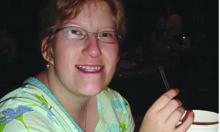Improving Access to Coverage for Children with Special Health Care Needs in the Face of Health Inequities: Strategies Reported by Family Leadership Organizations
The Catalyst Center is committed to identifying and supporting state- and local- level policies, programs, and initiatives that reduce inequities in health insurance coverage and health care financing among underserved and vulnerable children with special health care needs (CSCHN). Inequities impact many CSHCN including racial and ethnic minority children, older children, those living in immigrant families or in families in which English is not the primary language, and those with the most significant functional limitations. To further this goal, we interviewed staff from family leadership organizations in five states to learn about the barriers underserved families face and the strategies these organizations use to address health insurance inequities among CSHCN in their communities. These interviews expanded our understanding of the impact of coverage and financing inequities on CSHCN, their families, and their communities. They will help guide future Catalyst Center work around coverage and financing inequities.
In preparation for the interviews, Catalyst Center staff created a list of potential family leadership organizations based on previous contacts and targeted searches of family organization websites. We interviewed staff from family leadership organizations in Colorado, New Jersey, Oregon, Rhode Island, and Vermont to learn about barriers families raising CSHCN were encountering and the strategies organizations used to help families overcome these barriers. These organizations were selected because of their explicit commitment to addressing the needs of underserved and vulnerable CSHCN.
Findings
Staff from these organizations reported that barriers faced by families of underserved or vulnerable CSHCN included lack of access to services for certain groups (for example, those living in rural or frontier areas), difficulty understanding benefits or eligibility because of language barriers or systems complexity, and specific policies, such as the five-year waiting period for legal immigrants to get Medicaid coverage.
Family organizations identified several strategies to address the barriers to coverage and care that vulnerable families face. These include:
- Non-traditional connections: Rather than expecting families to contact family organizations or conducting outreach at one location or in one geographic area, non-traditional connection activities aim to reach families ”where they are,“ in their local communities. For example, staff at New Jersey Family Voices uses a grassroots approach to reaching families in local communities. Staff goes out to locations where they know they can meet and connect with underserved populations. They connect with families at community centers, Head Start locations, hair and nail salons, parks, and faith-based organizations to educate families about their health insurance options and to provide families with the skills to share the information with other families in their communities. The staff also visits employees at restaurants or schools where employers do not provide insurance coverage. For their efforts, the New Jersey Department of Health awarded New Jersey Family Voices a “Best Practices in Reducing Health Disparities” award.
- Language Diversity: Organizations provide information and services in a variety of languages to connect with families for whom English may not be the primary or preferred language. For example, Rhode Island Family Voices co-located a Spanish speaking family resource specialist in a family practice in a community with a large Spanish-speaking population. This was an effective way to connect with families who might not otherwise receive information about health insurance options and other resources in their preferred language.
- Inter-agency partnerships: Organizations develop connections among state affiliates of Family Voices (a national, family-led organization that works to ensure CSHCN receive family-centered care), other family leadership organizations, and community-based organizations in an effort to help coordinate services and avoid duplication of services. These partnerships help connect family organizations with underserved families who may not know about available services or who may be reluctant to trust an organization they do not know. For example, Colorado Family Voices partnered with an organization that serves refugees. Family Voices now participates in this organization’s events to provide education and connect with families who may not know the services that are available to them. Vermont Family Voices partners with the Visiting Nurse Association to reach underserved populations in their communities.
While the above strategies showed success in improving outreach to vulnerable and underserved CSHCN, one additional strategy merits recognition for its potential to address inequities. In the metropolitan areas of Oregon, community organizations provide outreach to increase information about health insurance options and provide enrollment assistance. The Oregon Family-to-Family Health Information Center applied for an ACA-funded grant to provide outreach and enrollment for the health insurance Marketplace in rural communities. While they did not receive the funding, this is a strategy that other organizations may want to pursue to increase outreach and enrollment in communities that may not otherwise be reached.
Moving Forward
The Catalyst Center is now conducting interviews with families about the impact of coverage and financing inequities among CSHCN. The goal is to identify additional strategies that community-based organizations might use to help address health care inequities among families of CSHCN. This family interview project has approval from the Boston University Medical Campus Institutional Review Board (IRB). This research will be used to inform Catalyst Center products and activities and to produce peer-reviewed article(s) on coverage and financing inequities among CSHCN. If you know of a family who may be interested in participating in an interview, please contact Catalyst Center Research Assistant, Kasey Wilson ([email protected]).

